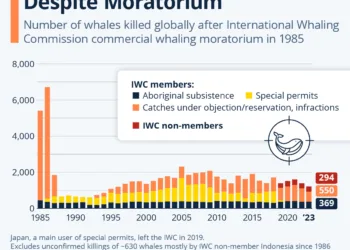Understanding the Threatened Species Crisis: A Closer Look at the IUCN Red List
Introduction to Biodiversity Loss
The urgent matter of biodiversity loss has reached alarming levels due to human activity. Agrarian expansion, rampant overfishing, and plastic pollution in our oceans have put immense pressure on various ecosystems around the globe. This degradation has resulted in a significant decline in both plant and animal species, reflecting an alarming trend of extinction.
The Role of the UN IPBES
In 2019, the United Nations’ Intergovernmental Science-Policy Platform on Biodiversity and Ecosystem Services (IPBES) highlighted these dire circumstances. Joyce Msuya from the UN Environment Programme stated, “Nature makes human development possible, but our relentless demand for the earth’s resources is accelerating extinction rates and devastating the world’s ecosystems." This statement encapsulates the enduring tension between development and environmental preservation, a struggle that continues to escalate today.
The IUCN Red List: An Overview
The International Union for Conservation of Nature (IUCN) maintains the Red List of Threatened Species, a comprehensive inventory of the global conservation status of biological species. In its latest update, it reports that 46,337 out of 166,061 assessed species are now classified as threatened with extinction. This alarming statistic underscores the severity of the biodiversity crisis.
Categories of Threatened Species
The IUCN Red List categorizes species into three main classifications of threat:
- Critically Endangered: Species facing an extremely high risk of extinction in the wild.
- Endangered: Species that are not critically endangered but are still at a very high risk of extinction.
- Vulnerable: Species that are at risk of extinction due to a downward trend in their numbers or habitat.
The Importance of Trees in Ecosystems
A groundbreaking addition to this year’s assessment is the inclusion of trees, with the report revealing that at least 16,425 out of 47,282 assessed tree species are at risk of extinction. This is particularly alarming because trees play a vital role in maintaining ecological balance. They are integral to:
- Carbon Cycle: Trees absorb carbon dioxide, helping to mitigate climate change.
- Water Cycle: They assist in maintaining the hydrological balance by influencing rainfall patterns and groundwater replenishment.
- Nutrient Cycling and Soil Formation: Trees improve soil fertility and structure, which is essential for agriculture and sustaining other plant life.
Proportional Threats Among Species
The findings from the IUCN Red List indicate that more than three in ten tree species are currently under threat. Trees, alongside many animal species, are among the most endangered biological groups assessed. The Red List focuses on groups containing at least 150 species with at least 80% of their species evaluated, thus providing a more comprehensive view of the extinction crisis.
Future Directions for Conservation
The urgency of addressing biodiversity loss is underscored by the IUCN’s ambitious goal to assess 260,000 species by 2030, in addition to re-evaluating 142,000 previously assessed species. This effort aims to provide more accurate and timely information regarding the state of biodiversity and guide conservation efforts globally.
The Call to Action
The current state of biodiversity demands immediate attention from policymakers, conservationists, and the public. Collaborative efforts are critical to reversing these trends and ensuring the preservation of our planet’s rich biological heritage. Without decisive action, we face a future where our natural world is irrevocably diminished, endangering not just specific species, but the intricate ecosystems upon which all life depends.
Final Reflections on Biodiversity Preservation
With current trends indicating increasing levels of threatened species, both awareness and proactive measures are essential. Understanding the implications of biodiversity loss not only highlights the urgent need for conservation efforts but also fosters a greater appreciation of nature’s intricate web of life that sustains us all.








